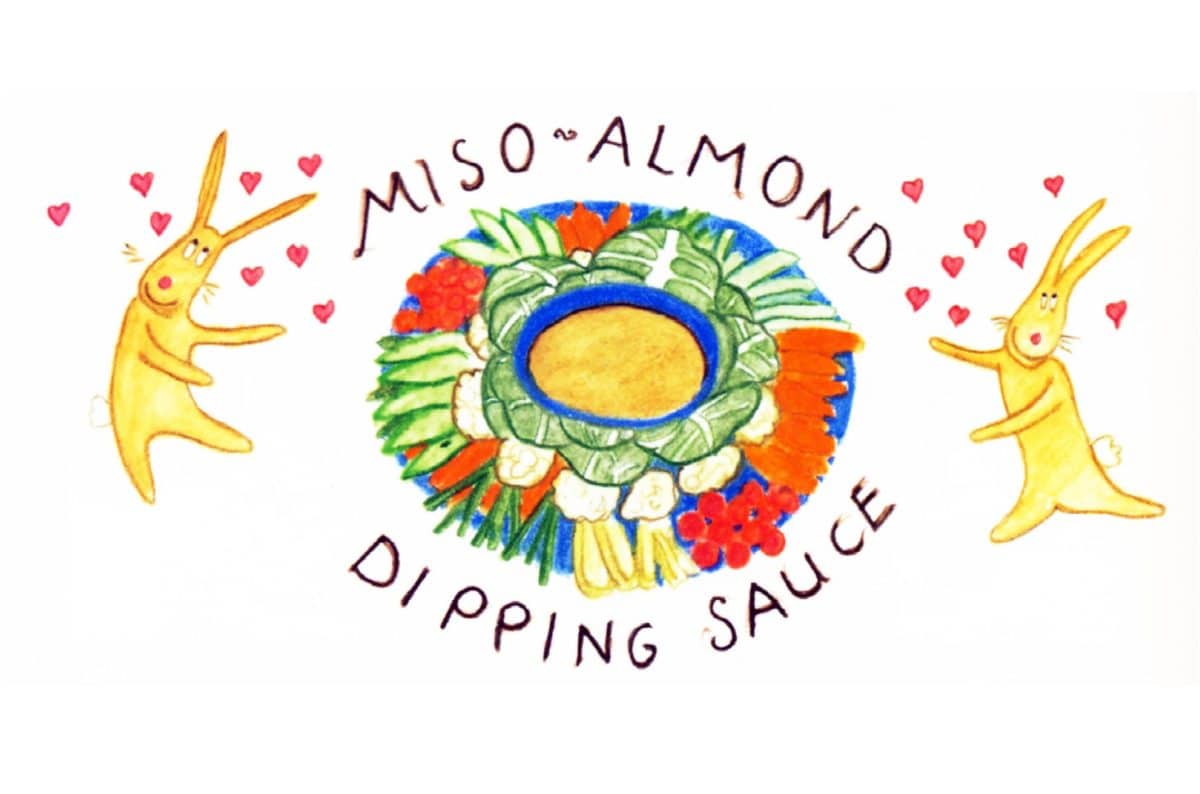The Critics Rave:
The snow pea is a good scooper. –ELLA
Did you know that grasshoppers like snow peas? –CHARLEY
Be careful because this might be too yummy for me to eat! –THEO
I can’t wait! –SASCIA

Ingredients
- •113 grams (1 cup/¼ pound) slivered almonds, lightly toasted
- •4 shakes salt
- •15 to 30 (1 to 2 tablespoons) canola, peanut, or soy oil
- •45 ml (3 tablespoons) shiro miso (or a similar light variety)
- •90 ml (6 tablespoons) warm apple juice
- •Vegetables for dipping or crackers for spreading
Cooking Hint and Safety Tip:
• If you prefer to make this recipe with commercially prepared almond butter, use 90 ml (6 tablespoons); if it’s salted, omit the salt from the recipe
• Use a salt shaker that is neither to fast nor too slow.
• Kids can push the buttons on the blender. (It’s easiest for them to use their thumbs.) However, removing the almond butter from the blender is an adult-only job. It must be made very clear that children should never touch the blade.
• Mixing this thick sauce is challenging for small children. Tell them to mix it by pushing it: “Mash down into the bowl.”
Children’s Tools: Dry measuring cup; blender; salt shaker; measuring spoons; medium-sized bowl; soup spoon for mashing.


Preparation
Place the almonds in a blender with the salt and 15 ml (1 tablespoon) of the oil.
Blend to make a smooth paste, adding another 15 ml (1 tablespoon) of oil if necessary.
Transfer to a medium-sized bowl.
Add the miso and half the apple juice. Mash and stir until uniform.
Mix in the remaining apple juice. Serve at room temperature, with vegetables for dipping or spread on crackers.
Eat!
To the Grown-ups:
Children love this deeply flavored high-protein snack. They will enthusiastically scoop it up with carrots, celery, raw green beans, bell peppers, or snow peas—and will just as happily spread it on crackers.
Miso is a salty paste made from fermented soybean and grains. You can find many different varieties of miso in natural-food groceries and Asian markets (and in some regular supermarkets). For this recipe, use a variety that is mild in flavor, such as shiro, mellow white, or any miso that is very light in color.
When I first served this dip, already prepared, to a group of preschoolers, they recoiled from it, noting its brown color and suspicious, ambiguous identity (not their words). Then, a few days later, I brought in the assembled ingredients, including the almonds and a blender to make our own almond butter, and this time the experience was completely different! Tasting one component at a time, the same children were enthralled with every step and each ingredient, discussing their impressions throughout the process. It was a real food literacy lesson! They loved the homemade almond butter so much that we had to make a second batch, because they consumed the entire first batch before we could get started on the bigger recipe.

